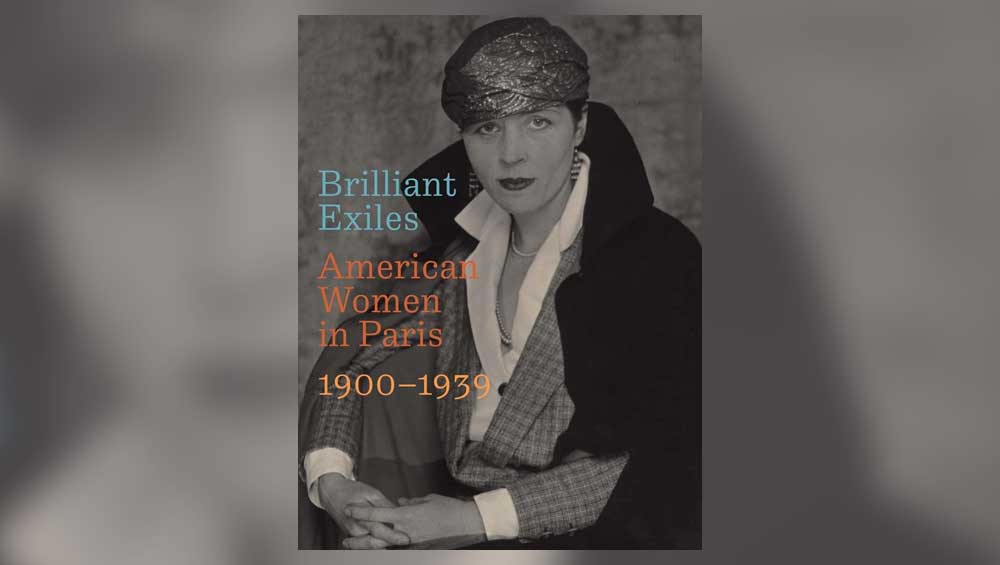
Brilliant Exiles: American Women in Paris 1900-1939, published by Yale Books in association with the National Portrait Gallery, Smithsonian Institution, Washington DC.
reviewed by BETH WILLIAMSON
The title of this book is something of a misnomer. The brilliant exiles it refers to, those creative American women who went to Paris between 1900 and 1939, were not really exiled in the French capital. Rather, they were liberated from convention and expectation in the US, finding new freedom to live their lives as they wished in early 20th-century Paris. More than that, these women flourished as leading figures on the avant garde cultural scene. With new-found freedom and autonomy, they made significant contributions to the modernist milieu of Paris. This publication uses portraiture to bring fresh understanding to the histories of almost 60 such women, many of whom were pre-eminent cultural arbiters in the shifting fields of art, literature, publishing, music, fashion, journalism, theatre and dance. They included the photographer Berenice Abbott (1898-1991), the dancer and singer Josephine Baker (1906-1975), the novelist and painter Zelda Fitzgerald (1900-1948), the art collector Peggy Guggenheim (1898-1979), the painter Romaine Brooks (1874-1970), and the writer and art collector Gertrude Stein (1874-1946).
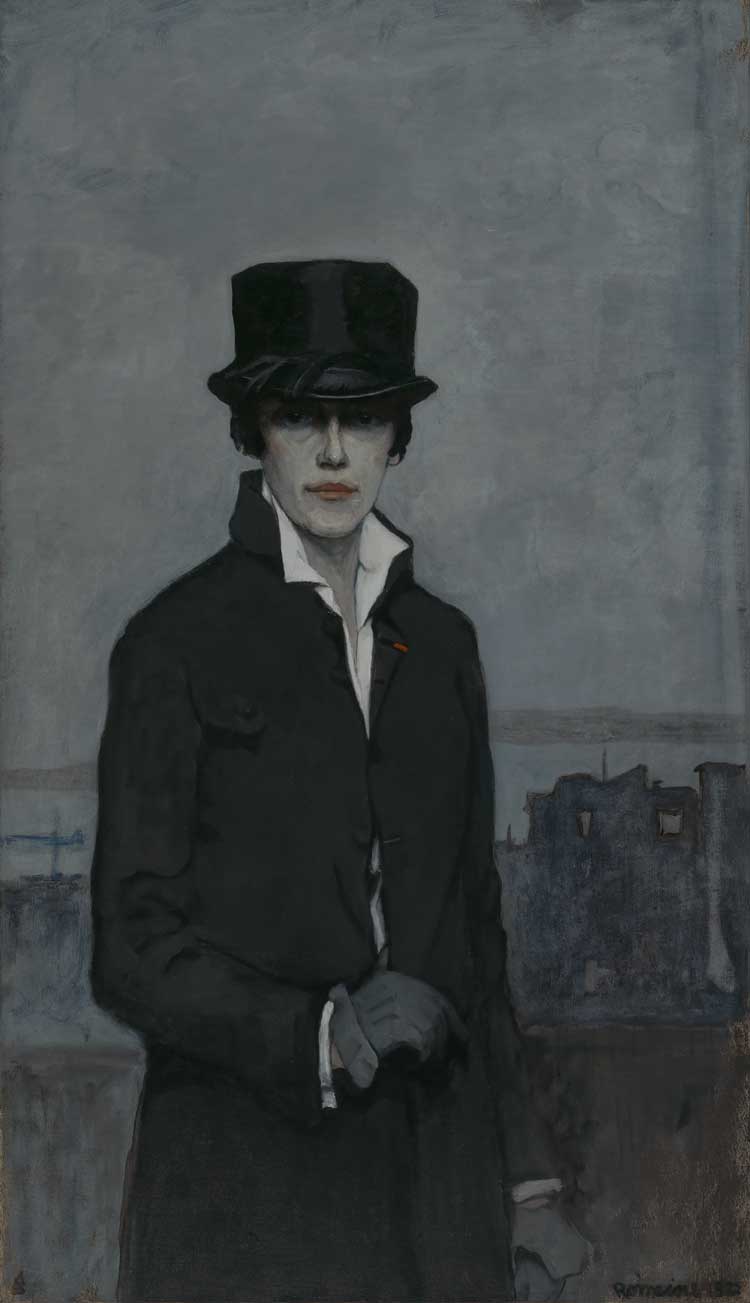
Romaine Brooks, Self-Portrait, 1923. Oil on canvas, 46 1/4 x 26 7/8 in (117.5 x 78.3 cm). Smithsonian American Art Museum, Washington, D.C. Gift of the artist.
The main body of the book is taken up with a catalogue organised around eight themed chapters, followed by four essays. All are concerned, one way or another, with the transformation of these women, liberated from the restrictions of gender, sexuality and race that they faced in their own country and redrawing the cultural map of Paris. Impatient for change, they flocked to Paris in a move to emancipate themselves and achieve their ambitions. Robyn Asleson quotes the artist Marguerite Thompson – later Zorach – (1887-1968), who wrote: “Here one is free, as nearly as it is possible for a person to be free, to wear what you like, go where you like, and do what you like. No one judges you, no one condemns you.” You can almost hear the jubilation in her voice.
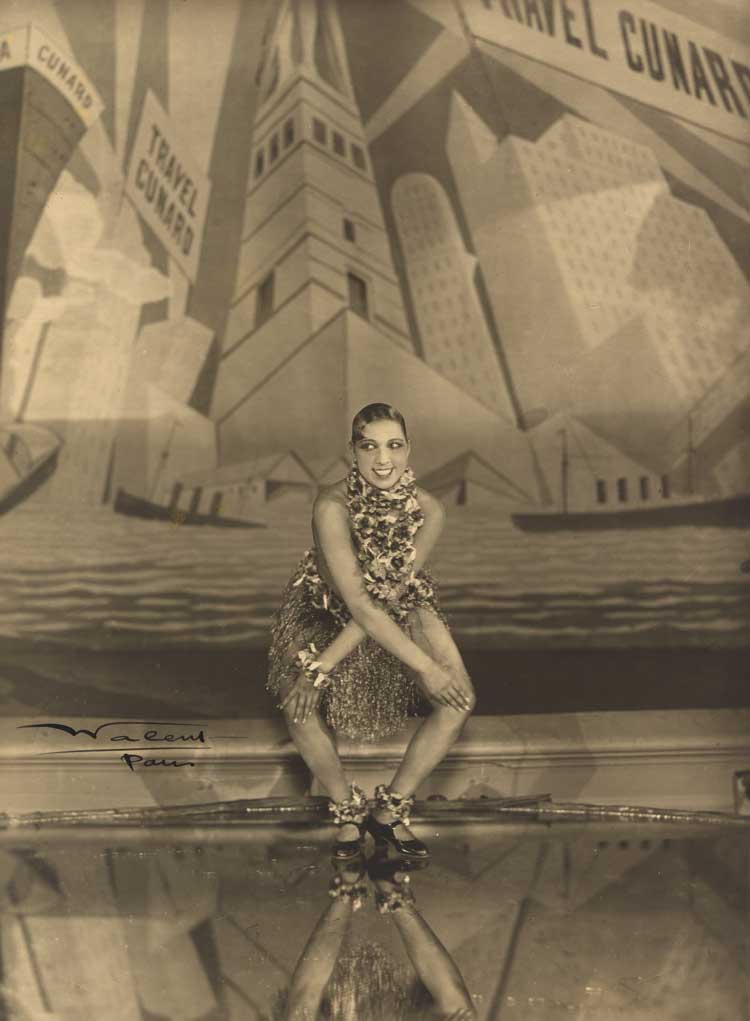
Stanislaw Julian Ignacy Ostroróg, known as Waléry, Josephine Baker, 1926. Gelatin silver print, 8 3/4 x 6 3/8 in. (22.2 x 16.2 cm). National Portrait Gallery, Smithsonian Institution, Washington, D.C.
The portraits studied in this book act as visual representations of identity, allowing reader and writer to explore that identity, providing persuasive perspectives on their ideas about gender, sexuality and race. The place of dress and fashion in all of this was paramount. For Baker, for instance, couture clothing allowed her to distance her everyday life from colonial-primitivist fantasies she enacted on stage. She even modelled for couturiers in fashion magazines, further underlining her stage performances as separate from her own identity. Meanwhile, other black female entertainers, such as Ada “Bricktop” Smith (1894-1984), found new poise and confidence wearing designs by Edward Molyneux, Jean Patou and Elsa Schiaparelli.
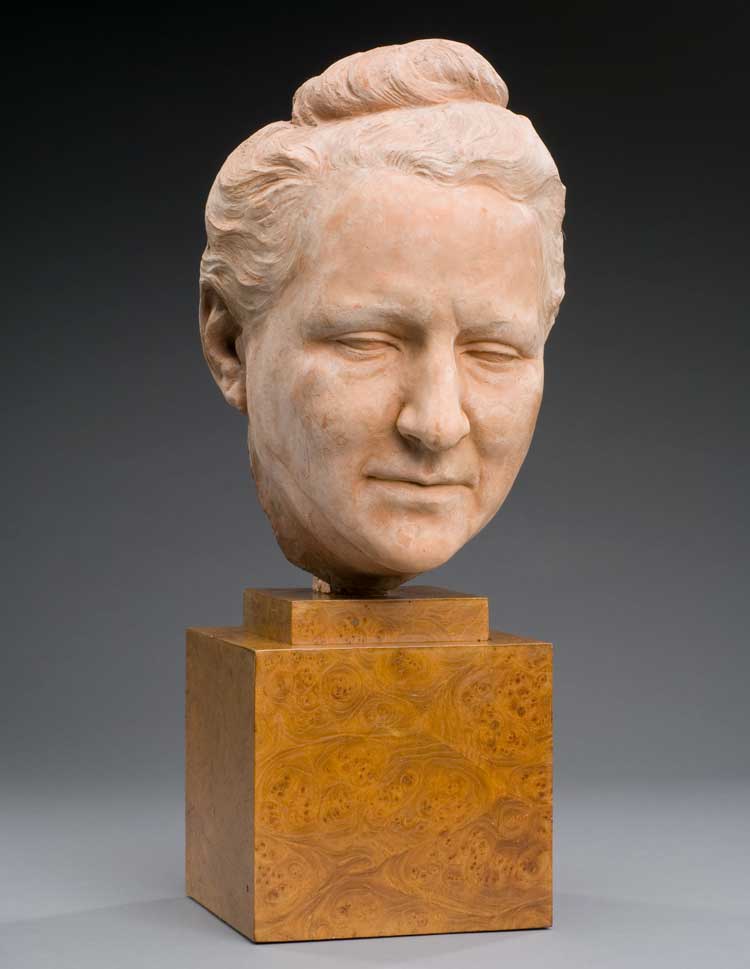
Jo Davidson, Gertrude Stein, 1922–23. Terracotta, 11 x 7 x 9 in (27.9 x 17.8 x 22.9 cm). National Portrait Gallery, Smithsonian Institution, Washington, D.C.
When the journalist Solita Solano (1888-1976) went with her lover, Janet Flanner (1892-1978), to Paris in 1922, she was able to leave behind the tailored suits and hats of professional life in the US and reinvent herself. In a portrait of Solano by Yasushi Tanaka in 1923, her bobbed hair and obvious use of makeup identify her as a modern woman. Homosexuality was not criminalised in France and there was no external societal pressure for individuals to account for themselves in this respect. Couples such as Stein and Alice B Toklas (1877-1967) were able to form intimate partnerships over several decades in Paris. Long-established stereotypes regarding “feminine” artmaking, behaviour and representation were overturned and American women in Paris asserted new conceptions of modern female identity.
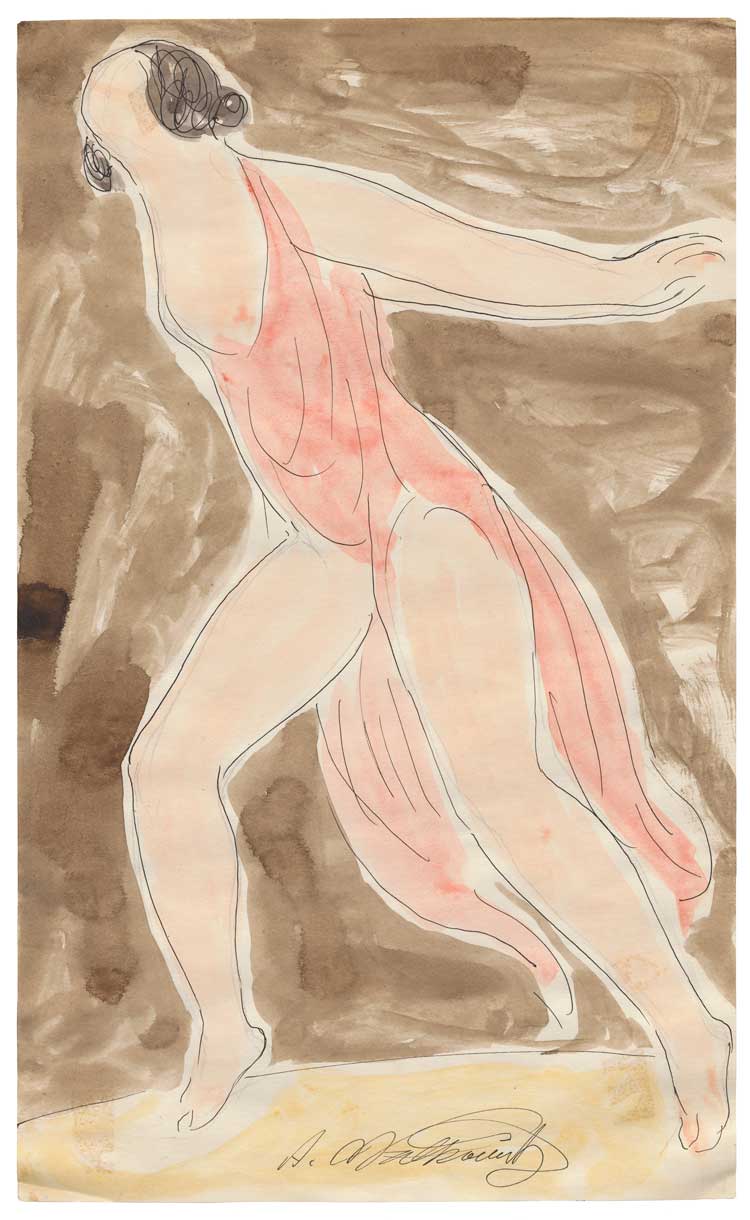
Abraham Walkowitz, Isadora Duncan, date unknown. Ink, watercolour, and graphite on paper, 13 15/16 x 8 7/16 in (35.4 x 21.4 cm). Hirshhorn Museum and Sculpture Garden, Smithsonian Institution, Washington, D.C. The Joseph H. Hirshhorn Bequest. Photo: Alex Jamison.
In the world of dance, Isadora Duncan (1877-1927) danced barefoot in loose draped clothing, shedding the regulated positions and restrictive clothing more usually associated with ballet. In The Dance of the Future (1903), she articulated what is widely considered to be the first manifesto of modern dance. The freedoms inherent in that approach are evident in Abraham Walkowitz’s watercolour paintings of Duncan while Edward Steichen’s photogravure shows her as sensual and confident. Artist and patron Gertrude Vanderbilt Whitney (1875-1942) was someone else for whom dance was important. Appropriating eastern dance traditions allowed her to explore her own sensuality with a particular emphasis on the grace of long hands and arms, as seen in Baron Adolph de Meyer’s photograph of her performing c1913.
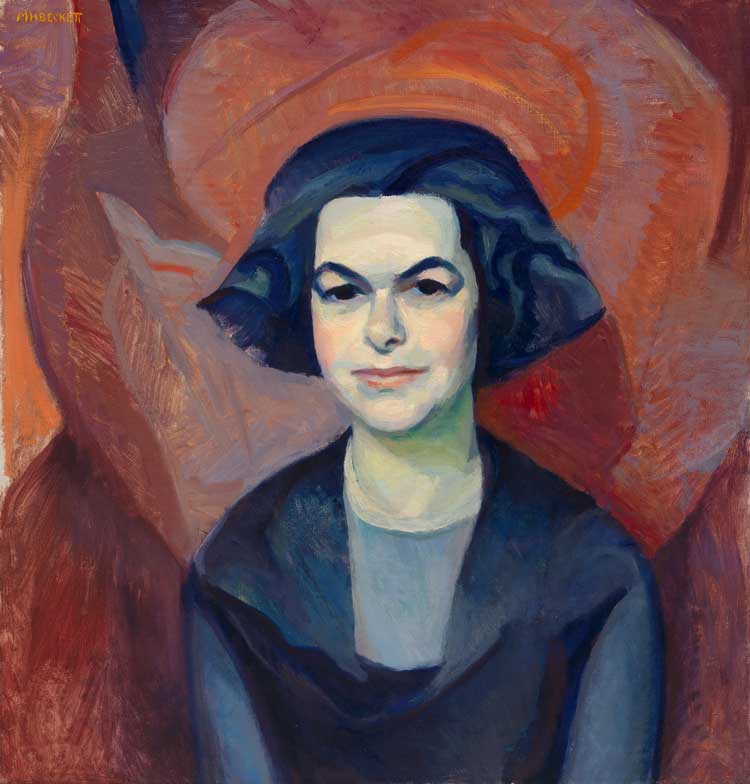
Marion H. Beckett, Theresa Helburn, 1922. Oil on canvas, 25 3/16 x 23 15/16 in (64 x 60.8 cm). National Portrait Gallery, Smithsonian Institution, Washington, D.C. Gift of Larry Aldrich.
In the theatrical world, playwright and producer Theresa Helburn (1887-1959) encountered progressive and innovative theatres in Paris, such as the Vieux-Colombier and the Théâtre du Nouvel-Ambigu, that led her to revitalise American theatre when she returned there. She also studied with Henri Bergson at the Sorbonne and cultivated a friendship with Stein and Toklas, among others. Marion H Beckett’s striking 1922 portrait of Helburn conveys a bold, confident and even mischievous figure with her trademark brilliant blue hair. In another image of Helburn, a gelatin silver print by Ben Pinchot, she is portrayed as serious and demure, with her hair tied back and a string of pearls around her neck. If these different mediums allowed artists to portray various aspects of Helburn’s identity, it was Paris that allowed her to express them.
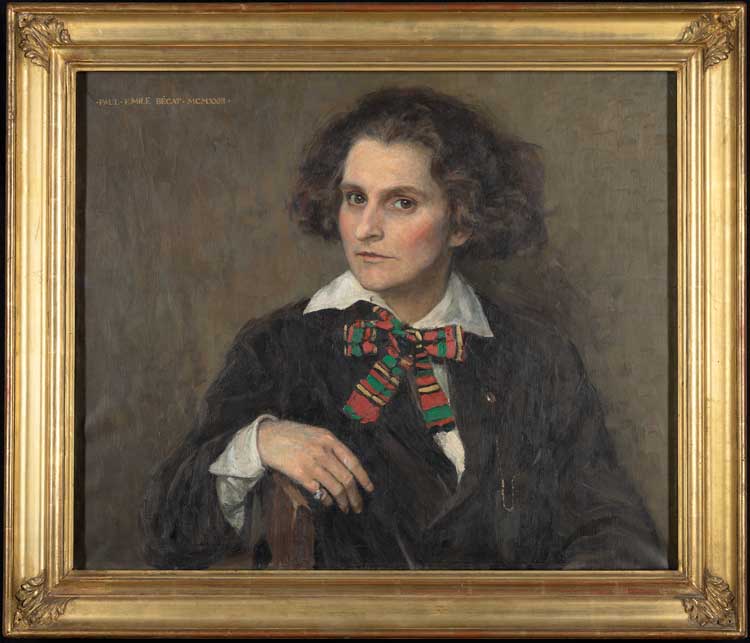
Paul-Émile Bécat, Portrait of Sylvia Beach, 1923. Oil on canvas, 22 x 25 in (55.9 x 63.5 cm). Manuscripts Division, Department of Special Collections, Princeton University Library
One of the cornerstones of literary modernism in Paris at this time was the English-language bookshop and lending library Shakespeare and Company, established in 1919 by Sylvia Beach (1887-1962). Beach spoke fluent French and had many French friends, including Adrienne Monnier, whose Parisian bookshop and lending library, La Maison des Amis des Livres, was the inspiration for Shakespeare and Company. Their shared interests soon led to an intimate relationship and the two women lived together for more than 16 years. In 1922, Beach published James Joyce’s Ulysses, bringing her considerable kudos in modernist circles. The following year, Paul-Émile Bécat painted an arresting portrait of Beach wearing a dark brown velvet jacket with a crisp white shirt and floppy bow tie. Later, in a photograph by Berenice Abbott in 1928, Beach presents herself as more assertive still.
African American women in Paris were doubly liberated from racial and gender-based discrimination in the US. The sculptor Meta Vaux Warrick Fuller (1877-1968) broke new ground by conveying a dignified expression of African American racial consciousness and pride in their work. La Petite Danseuse (c1902) is one of the few sculptures to survive from Warrick’s time in Paris. With a solo exhibition at Maison Bing that year, she was in stellar company as the gallery had also exhibited work by Rodin, Henri de Toulouse-Lautrec and Mary Cassatt. Towards the end of her time in the city, she met Rodin who reportedly admired her work and helped place two of her sculptures in the Paris Salon of 1903.
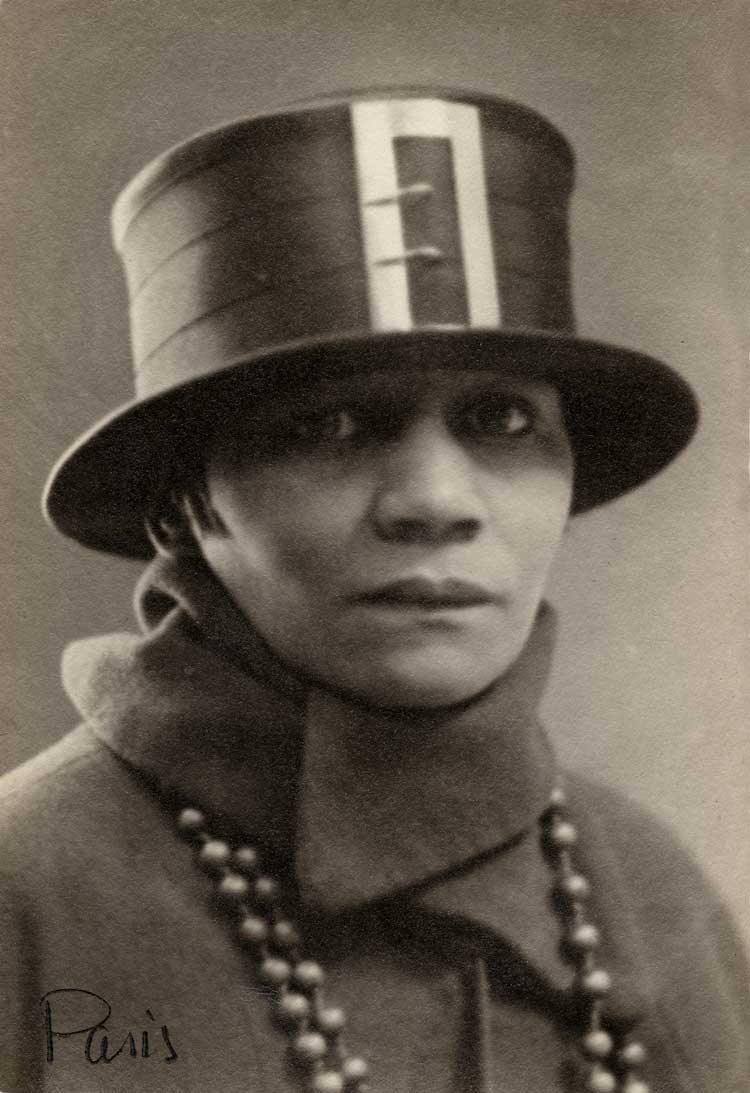
Unidentified photographer (possibly Bernès, Marouteau & Cie), Nancy Elizabeth Prophet in Hat, c1922–29. Gelatin silver print, 6 x 4 in (15.2 x 10.2 cm). James P. Adams Library Special Collections, Rhode Island College.
This only gives a flavour of the brilliant women and their lives as told in this publication. What is clear is that their considerable achievements would not have been possible in the US at that time and their move to Paris enabled them to explore their identity, to take risks and achieve things they could only have dreamed of at home. What is important, too, is that these achievements did not just affect them as individuals but changed the face of the arts and culture in Paris and later in the US, to which many returned. Living and working in Paris meant they were in an environment where they were free to be themselves and that made all the difference. It’s a great pity they had to go to such lengths to simply be themselves, but they did. It is because of their strength and creative imagination that art and culture flourished in all its variety, developing in innovative ways that probably could not have happened outside Paris at that time. The story of the brilliant exiles is a fabulous one and it is told with aplomb in this beautifully illustrated book.
• Brilliant Exiles: American Women in Paris 1900-1939 by Robyn Asleson is published by Yale Books in association with the National Portrait Gallery, Smithsonian Institution, Washington DC, price £45.
A touring exhibition of works to accompany this book is at the National Portrait Gallery, Washington DC, until 23 February 2025, the Speed Art Museum, Louisville, from 29 March to 22 June 2025, and the Georgia Museum of Art from 19 July to 12 October 2025.